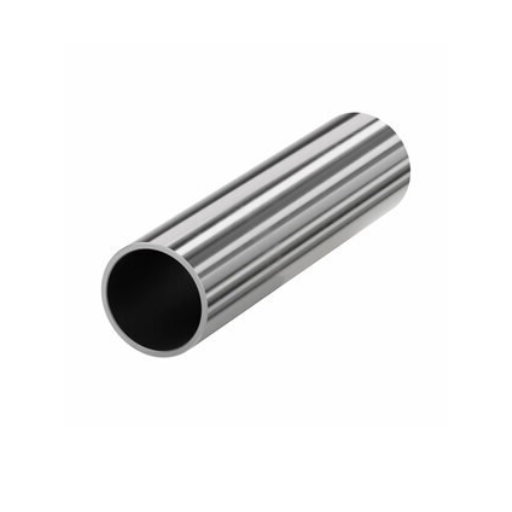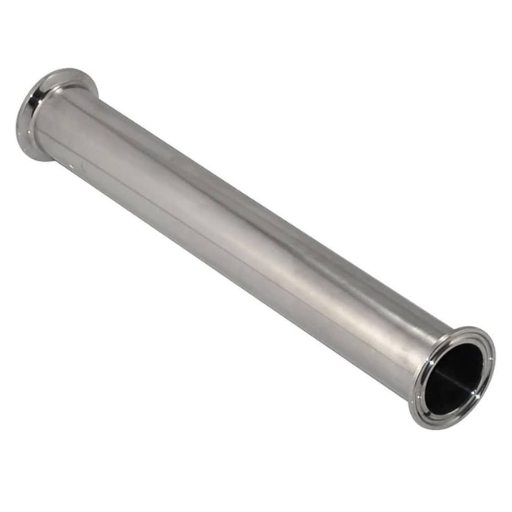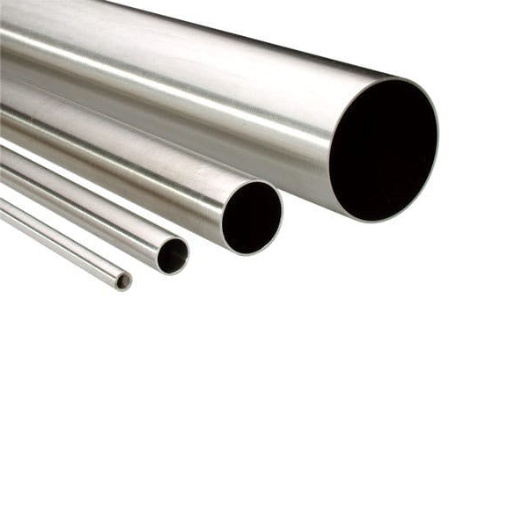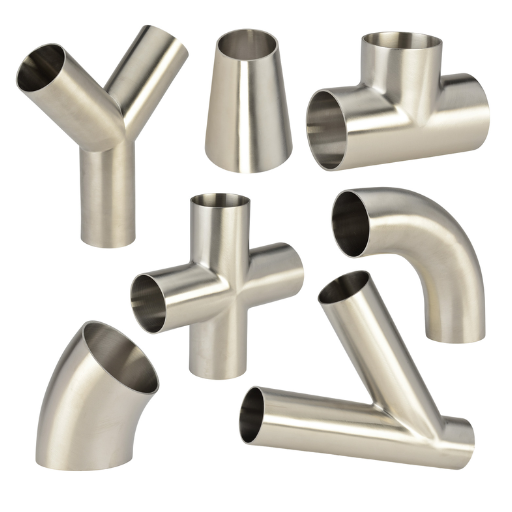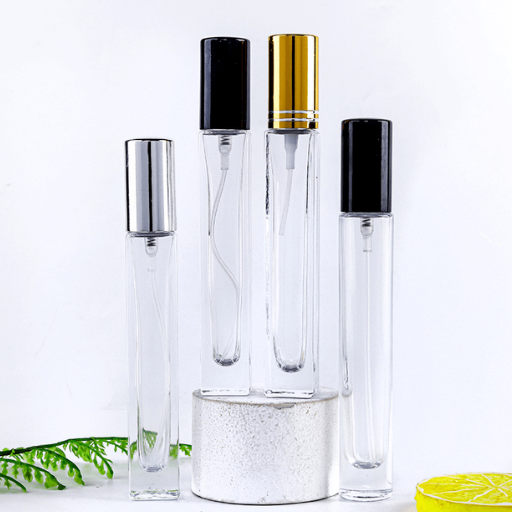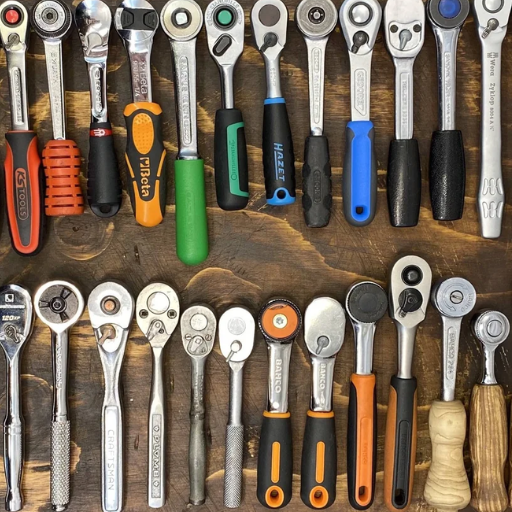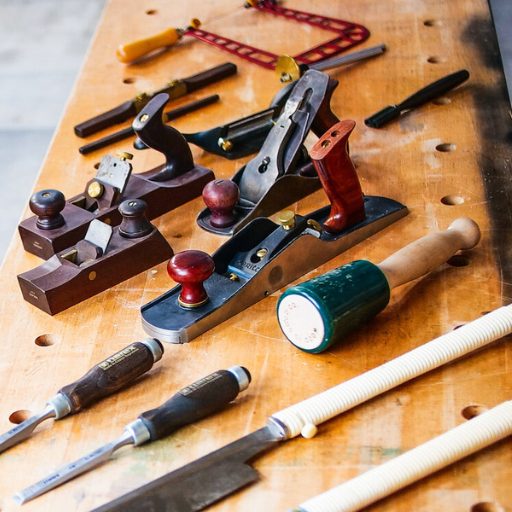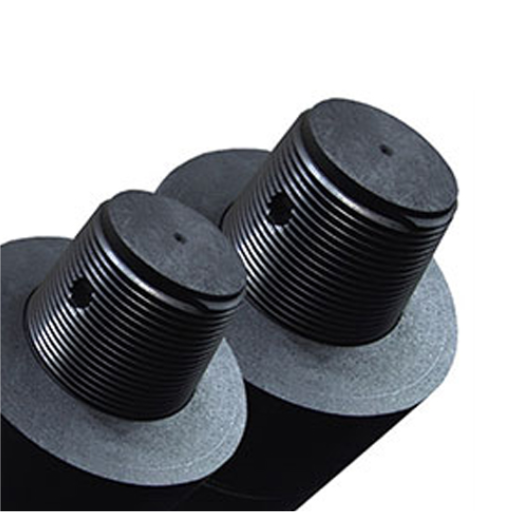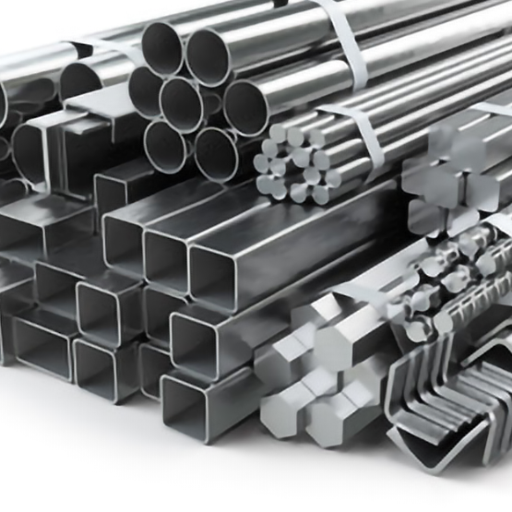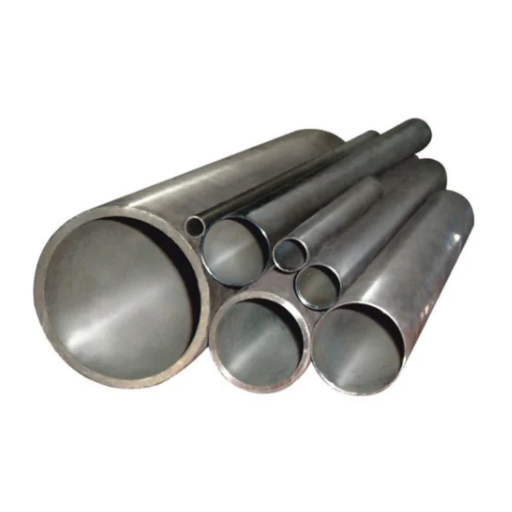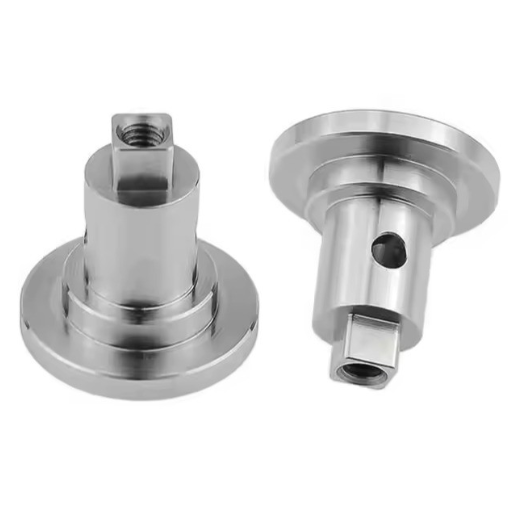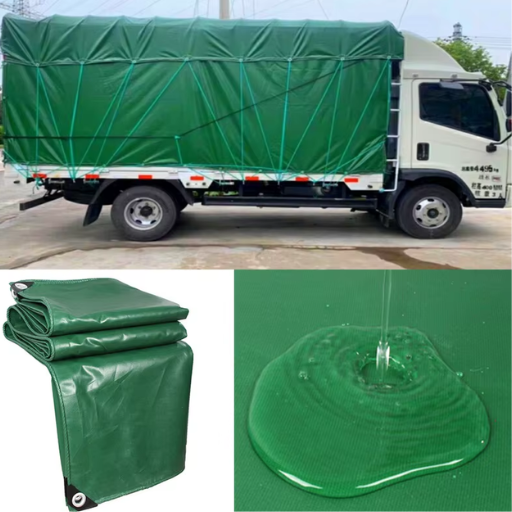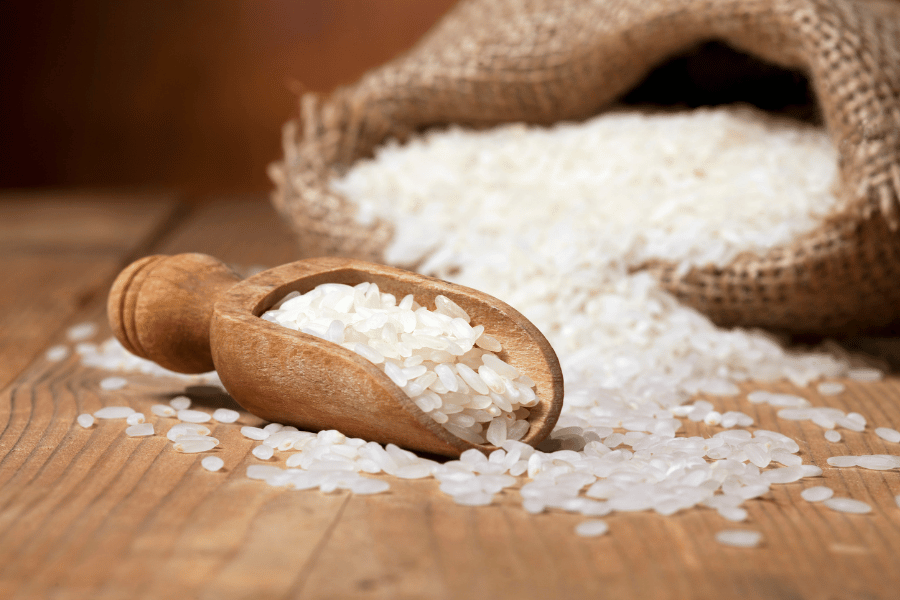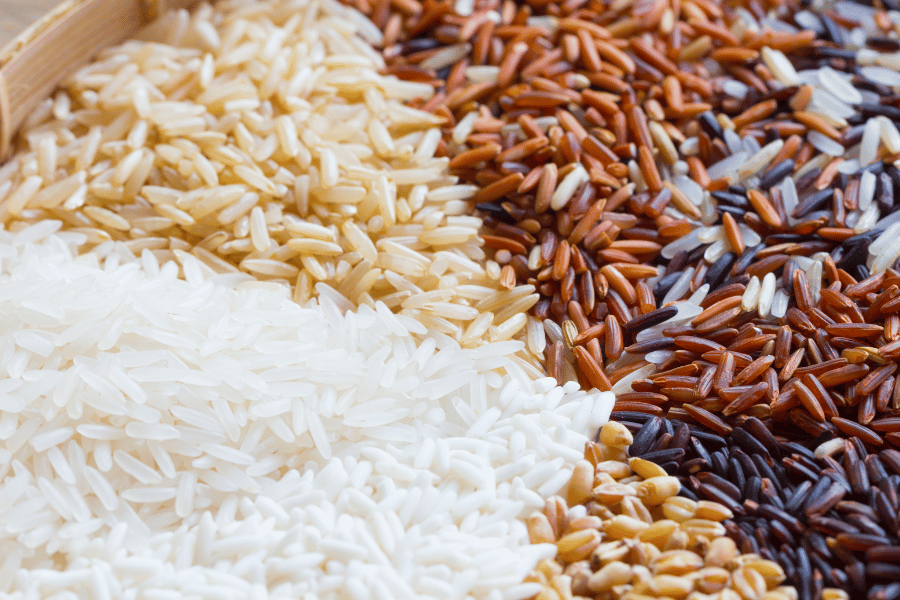Stainless steel sanitary tubing is relevant in areas that require extreme cleanliness, precision, durability, and efficiency. It is used in food and beverage production and pharmaceutical manufacturing, and has high hygiene standards. What makes stainless steel sanitary tubing the preferred option for these critical applications? How do you know you’re picking the right one for your needs? This informative article covers all your questions regarding sanitary tubing and its distinct features, advantages, and applicability across multiple industries. Whether you’re a professional in the industry or just looking to increase your knowledge on this critical mechanical part, this comprehensive guide will help you carve out well-grounded choices.Find more info now
What is stainless steel sanitary tubing, and what are its applications?
Stainless steel sanitary tubing is one of the types of tubes produced from stainless steel that can be used in areas where hygiene is of utmost importance. Made from stainless steel, which can withstand corrosion, is easily cleanable, and durable, making it practical for the food and beverage industry, pharmaceuticals, and biotechnology. These tubes are widely used in the transportation of liquids pneumatically, as well as the transportation of gases, and a variety of other materials, while ensuring strict sanitary measures. This includes processing equipment, water systems, and places that need to maintain contamination-free environments to preserve the safety and quality of the product.
Key Features of Sanitary Tubing
Industries dealing with food products, pharmaceuticals, and purified water with high hygiene requirements use sanitary tubing. Every sanitary tube is built to conform to regulatory requirements like the FDA and 3-A Sanitary Standards. These tubes are designed with a smooth and polished interior, which prevents the accumulation of bacteria and is thus suitable for transporting sensitive substances such as food products, pharmaceuticals, or even water.
Sanitary tubing is made from 304 or 316L grade stainless steel because it is known to possess tremendous resistance to corrosion, strength, and the ability to endure sterilization processes that include high steam temperatures and cleaning agents. It’s usually available in various wall thicknesses and diameters ranging from 1/4 of an inch to 8 inches to cater to different pressure requirements.
Applications of Sanitary Tubing
Maintenance-free environments that avoid contamination rely heavily on sanitary tubing. A few such examples are provided below:
- Food and Beverage industry: Transporting milk, juices, beer, and other liquids is easy using sanitary tubing, as it does not change their taste or purity.
- Pharmaceuticals: It is employed in bioprocessing and drug manufacturing to keep critical materials devoid of microorganisms or pathogens.
- Biotechnology: It enables the manipulation of biological solutions while protecting them from contamination during research and production.
Market Insights and Trends
According to a recent market analysis, the global sanitary tubing market was estimated to be around $2.4 billion as of 2022. The market is anticipated to grow at a rate of 6.5% each year until 2030. This growth is attributed to the rising need for sanitary food, pharmaceutical equipment, and hygienically processed food. Furthermore, improvements made to seamless tubing technology, along with automated welding, have enhanced the reliability and functionality of sanitary tubing.
Enforcing international health and safety policies contributes to the demand because industries try to adhere to compliance regulations. The Asia Pacific area is developing into a primary region because of the active growth of industries and improvement in investments in food processing and drug companies.
In addition, sanitary tubing is still one of the most essential elements for maintaining efficiency, safety, and compliance in various functions. Due to the ongoing changes in materials science and technology, there are still many opportunities for improvement.
Applications in the Food and Beverage Industry
Sanitary tubing is crucial for hygiene and quality control in the food and beverage industry. Its capacity to carry liquids, gases, and even semi-solids within set cleanliness boundaries makes it vital across many processes. The following are the most critical uses of sanitary tubing in this industry:
- Milk and Dairy Processing
Sanitary tubing is vital in transporting milk and other dairy products to avoid pollution. It ensures compliance with hygienic standards while preserving the product’s freshness, nutrition, and value.
- Beverage Production
Tubing systems are used to handle diverse liquids, including juices, carbonated drinks, and even alcohol. Such components guarantee the transfer process is safe, efficient, waste-minimizing, and flavor-reserving.
- Brewing and Distilling
The brewing and distilling industries use sanitary tubing to transport raw ingredients and finished products. It inhibits bacterial growth during transfer of liquids like wort and distilled spirits.
- Food Packaging
Sanitary tubing helps control the delivery of sauces, syrups, and other liquid constituents during the food packaging stage. This procedure assures the desired quality while sustaining the pace of production.
- Confectionery and Baking
Ingredients such as melted chocolate, dough, and fillings are transferred through hygienic tubing systems in the manufacture of confectionery and baked goods, contributing to consistency and quality in the final products.
Sanitary tubing systems in these applications meet the sanitary requirements set by the FDA and preserve efficiency and safety, marking them as vital parts of the entire food and beverage industry.
Use in Pharmaceutical and Other Industries
The tubing is essential in the sanitary methods in the Pharmaceutical Sector, as it aids in the intact transfer of liquids and gases during manufacturing. In practice, it maintains and binds the finished product within its bounds and minimizes contamination. Likewise, it is used in other industries, such as Cosmetics and Biotechnology, where sterility and accuracy are of paramount importance with regard to the Safety and Quality of the Products those industries offer.
How is Stainless Steel Sanitary Tubing Manufactured?
Sanitary Stainless Steel Tubing is a class of sanitary tubing manufactured from these materials. The stainless steel is initially shaped into a tube using either the seamless or the welded method. It then goes through a series of cleaning and polishing steps to enhance the smoothness and non-porosity of the surface finishes to the guaranteed easiest form of cleaning and preservation. Tubing undergoes meticulous measures to meet sterility standards, including initial inspections such as surface quality and pressure assessments. Lastly, the tubing undergoes passivation treatment, which enhances corrosion resistance, making it applicable to sensitive fields of use such as Biotechnology and Pharmaceutical Services.
Types of Stainless Steel Used
| Stainless Steel Type | Key Characteristics | Common Applications |
| Austenitic | High corrosion resistance, non-magnetic | Kitchenware, industrial piping, tanking |
| Ferritic | Magnetic, lower cost, medium corrosion resistance | Automotive parts, appliances, architecture |
| Martensitic | High strength, magnetic, moderate corrosion resistance | Cutlery, tools, medical instruments |
| Duplex | High strength, corrosion-resistant | Offshore rigs, chemical processing tanks |
| Precipitation-Hardening | Heat-treatable, exceptional strength | Aerospace, nuclear, oil, and gas |
Manufacturing Specifications and Standards
Sanitary stainless steel tubing is machined according to detailed industry regulations because it is used in sensitive areas such as pharmaceuticals, food processing, and biotechnology. The norms and specifications accompanying sanitary stainless steel tubing are as follows:
- ASTM Standards: The American Society for Testing and Materials has established several benchmarks, including ASTM A270, which reinforces a specific standard on sanitary-grade stainless steel tubing. This standard outlines expectations for the material’s makeup, mechanical attributes, and even surface finishes to ensure it can be sanitized and is compatible with system-critical processes.
- ASME BPE (Bioprocessing Equipment): This standard stresses surface finish and cleanliness in addition to dimensional tolerances. It was designed specifically for the biotechnology and pharmaceutical industries. Tubing under such standards can have electropolished interiors as smooth as Ra: 15-20 μin (0.4-0.5 μm), increasing its resistance to bacteria.
- ISO Standards: International organizations also oversee sanitary tubing. ISO 1127 and ISO 2037 define the limits for dimension, material, and surface quality. This set of standards guarantees that these products will function in various economic regions.
- EN Standards: EN (European Norm) standards such as EN 10357 deal with specifications of stainless steel tubing for foodstuff and chemical industry, covering safety and corrosion resistance issues.
- Surface Finishing and Roughness: Following the Ra standard, surface roughness is adequately critical. The following Ra finishes are common:
-32 μin (0.8 μm) for standard smooth surface.
-20 μin (0.5 μm) or less for ultra-smooth, polished interiors like pharmaceuticals.
- Pressure and Corrosion Testing: To evaluate its operational pressure, tubing is extensively tested using hydrostatic and pneumatic pressure tests. To ensure realistic susceptibility, corrosion resistance is tested under simulated chemical and cleaning agent exposure.
These standards enable stainless steel tubing to be manufactured with the required precision and reliability for sensitive applications, ensuring quality assurance and compliance throughout industries globally. Meeting the FDA and EU safe manufacturing policy requires proper certification and material traceability to fulfill regulatory standards.
Importance of Polish and Finish
The appropriateness of polish and finish of stainless steel tubing impacts its performance, lifespan, and whether it meets the industry’s international standards. A sanitary or pharmaceutical grade finish minimizes surface defects or spaces that could facilitate the stagnation of pollutants and bacteria, making a sanitary or pharmaceutical grade finish indispensable. Also, an alloy must withstand erosion regardless of the change in aesthetic appearances in addition to the defined corrosion resistance, and any additional damage to the structure of the alloy to maintain its appeal.
The following list presents 5 significant types of polish and finish as described for stainless steel tubing:
- Mill Finish (No. 2B)
- This finish is achieved by cold rolling, annealing, pickling, and passivation.
- This work is common for mechanical and industrial components where a basic untidy surface is satisfactory.
- Brushed Finish (No. 4)
- This type is a uniform, directional grain with a light texture.
- Brushed finish is also noted in architectural designs, which is why this is primarily used for construction projects.
- Electropolished Finish
- An electrolytic mechanism enhances polished surfaces by smoothing them on a microscopic scale, rendering them devoid of perceptible scratches.
- Typically used in highly sterile surroundings, presented in medical gadgets and semiconductors.
- Bright Annealed Finish (No. BA)
- This finish is highly appealing due to its heat treatment in a certain atmosphere, which achieves its shiny surface.
- Must be used solely for endorsement and places where a dominant shiny appearance is desired.
- Mirror Finish (No. 8)
- Reflective capability is outstanding in this polish as a shiny surface without visible lines emerges.
- Employed in premium applications where design features, as well as light reflectivity, are priorities.
Each finish is selected based on the surrounding conditions, legal restrictions, and design objectives of the application. Adherence to relevant standards ensures safety while a selection of polish and finish achieves the required performance.
What are the Key Specifications of Stainless Steel Sanitary Tubing?
Stainless steel sanitary tubing is fabricated to comply with the highest hygienic and safety requirements. Important parameters include:
- Material Composition: Usually consists of 304 or 316 stainless steel due to their corrosion resistance and strength.
- Surface Finish: Microbial management smooth interior surfaces (low Ra values) for easy cleaning.
- Compliance Standards: To comply with ASME BPE, FDA, and 3-A standards for food, beverage, and pharmaceutical use.
- Dimensions: Constructed with specific commercial diameter and wall thickness combinations for different uses.
- Weld Integrity: Strong contamination risk in precision welding.
- Pressure Rating: Must maintain structural degradation at high internal pressures.
These specifications ensure the tubing will endure the sanitary and performance requisites of hygiene-related uses.
ASTM A270 and A269 Standards Explained
| Standard | Material Type | Applications | Surface Finish | Mechanical Properties |
| ASTM A270 | Austenitic stainless steel | Food, dairy, pharmaceuticals | Polished, electropolished | High strength, corrosion-resistant |
| ASTM A269 | Austenitic stainless steel | General corrosion resistance | Mill finish, optional polishing | Handles high/low-temperature stresses |
Understanding Size, OD, and Wall Thickness
As with all types of tubing, cleaning and sanitary surfaces require precise measurements of the specific tubing outer diameter (OD), thickness, and wall dimensions to determine whether it will meet the application needs. These factors affect the tubing’s lifespan, flow rate, and ability to handle internal and external tension.
- Outer Diameter (OD): The OD is the diameter encompassing the outer boundaries of the tube. Standard sanitary tubing ranges from 0.5 inches to a whopping 12 inches, depending on industry needs. The most commonly used sizes include 1.5 inches, 2 inches, and 3 inches for the food, dairy, and pharmaceutical industries.
- Inner Diameter (ID) and Wall Thickness: The wall thickness dictates the internal diameter measurement, resulting in the particular tubing’s flow level and pressure capability. For instance, the flow rate of tubing conforming to ASTM A270 standards will always have wall thicknesses like 0.065 inches for 16 gauge or 0.083 inches for 14 gauge. This is to ensure the balance does not disrupt the flow rate and structural integrity.
- Standard Sizing Chart: An example of an industrial standard stainless steel sanitary tubing size chart is illustrated here:
| OD (inches) | Wall Thickness (inches) | ID (inches) |
| 1. 5 | 1. 065 | 1. 370 |
| 2 | 1. 065 | 1. 870 |
| 3 | 1. 083 | 1. 834 |
| 4 | 1. 083 | 1. 834 |
- Compatibility with Sanitary Applications: To comply with sanitary standards required for food service or pharmaceutical industries, it is important to choose suitable dimensions such as size and wall thickness. Proper sizing prevents obstruction of free flow and fluid entrapment, eases cleaning, and reduces cavities.
Evaluation of these considerations will assist in choosing the correct length of tubing for the process and help guarantee safety, efficiency, and adherence to industry regulations.
How to Choose the Right Stainless Steel Sanitary Tube for Your Needs?
- Grade of Material
It is advised to use premium stainless steels like 304 or 316 as they possess high resistance to corrosion and excellent durability even in exceedingly demanding settings like food processing or pharmaceutical manufacturing.
- Dimensions of the Tube, Including Their Diameter and Thickness
Pick a size and thickness that accommodates your system’s flow rate and pressure. Adequate dimensions permit fluid passage without stagnation, ensuring optimal functionality.
- Finishing of Surfaces
Ensure the tubings have a smooth, well-polished surface finish to minimize bacterial adhesion and ease cleaning.
- Recognition of Standards
Ensure the tubings meet the requirements of the relevant standards, FDA, ASTM, and ISO, which are specific to your industry and particular needs.
- Compatibility with the Intended Application
Assess the type of fluid, along with temperature and pressure, to ensure the tubings can withstand such conditions without deterioration.
Considering these considerations will allow you to select a stainless steel sanitary tube that aligns with your operational requirements while guaranteeing safety, efficiency, and regulatory compliance.
Factors to Consider: Size and Length
Dimensions, size, and length are pointers of selection while choosing stainless steel sanitary tubing simply because they ensure the optimal performance of your equipment. Here are five factors about size and length:
- Inner Diameter (ID): The tubing’s ID must be appropriate for the process’s flow rate. Adequate ID mitigates flow restrictions, which prevent the system from operating smoothly.
- Outer Diameter (OD): Standard OD sizes are critical for system uniformity. The outer diameter is also necessary for compatibility with connectors, fittings, and supports that attach to the tubing.
- Wall Thickness: The thickness of the wall impacts the force and pressure that can be applied to the plumbing system. While high-pressure systems require sturdier wall thickness, low-pressure systems can function with thinner walls.
- Length of Tubing: Tubing cuts can be unlocked or customized to achieve a set length that allows them to cover the setup distance and mitigate suction. Increased suction on apertures increases the likelihood of leaks.
- Flexibility for Customization: Twisting and cutting ease enable facility designs and layouts to be tailored, making them useful in adjustable designs. Some installations necessitate layouts and spaces that are custom-fit, requiring the use of easily manipulated designs.
Considering these factors will guarantee that your stainless steel tubing fulfills the necessary functional and design specifications and meets operational standards.
Evaluating Quality Stainless Steel Materials
| Parameter | Description |
| Grade | Indicates material properties and composition |
| Surface Finish | Determines aesthetics and corrosion resistance |
| Corrosion Resistance | Assessed via salt spray or immersion tests |
| Certifications | Includes ISO, ASTM, or EN 10204 compliance |
| Magnetic Test | Evaluates the iron content and quality of the alloy |
| Hardness Test | Uses Rockwell or Brinell for material strength |
| Flexibility | Measures tensile strength and adaptability |
| Manufacturer Info | Check supplier reliability and quality record |
Frequently Asked Questions (FAQ)
Q: What is stainless steel sanitary tubing?
A: Stainless steel sanitary tubing is a type of pipe designed for use in environments that require high levels of cleanliness and corrosion resistance. It is commonly used in food, beverage, and pharmaceutical industries.
Q: What are the benefits of using 304 stainless steel for sanitary tubing?
A: 304 stainless steel is highly resistant to corrosion and has excellent formability and weldability, making it ideal for sanitary applications. It maintains the integrity of the tubing, ensuring high-quality and safe liquid transport.
Q: How does a270 tubing differ from standard tubing?
A: A270 tubing is designed specifically to meet the ASTM A270 and 3A sanitary standards. It offers superior surface finishes and cleanliness compared to standard tubing. It is commonly used in the dairy and beverage industries.
Q: What is the significance of 20RA in sanitary tubing?
A: 20ra refers to the surface roughness of the tubing, measured in micro-inches. A 20 μ-in finish ensures a smooth surface that minimizes bacterial growth and makes cleaning more efficient, crucial for sanitary applications.
Q: What are the standard sanitary tubing sizes available?
A: Sanitary tubing sizes typically range from ½ inch to several inches in diameter. The specific size depends on the application requirements, including the flow rate and space constraints.
Q: What is BPE tubing, and where is it used?
A: BPE tubing, or Bioprocessing Equipment tubing, is designed to meet the stringent standards required for the pharmaceutical and biotechnology industries. It ensures purity and cleanliness in the transport of sensitive fluids.
Q: How is the sanitary tubing tested for quality?
A: Sanitary tubing undergoes rigorous testing, including eddy current testing, to ensure it meets quality standards. This helps verify the tubing’s integrity and detect defects in the weld or material.
Q: What surface finishes are available for sanitary stainless steel tubing?
A: Sanitary stainless steel tubing can have various surface finishes, such as polished or bright annealing, to enhance its cleanliness and appearance. These finishes help reduce the risk of contamination and improve durability.
Q: How is the shipping and packaging of sanitary tubing handled?
A: Sanitary tubing is carefully packaged to prevent damage during shipping. It often includes protective end caps and is secured to maintain its quality and integrity until it reaches its destination.
Q: What are tri-clamp spool assemblies and their use in sanitary tubing systems?
A: Tri-clamp spool assemblies connect sections of sanitary tubing. They provide a secure, easy-to-clean connection that maintains the sanitary conditions required in processing environments.

